Review: HTC One A9 for AT&T
Dec 2, 2015, 6:00 PM by Eric M. Zeman
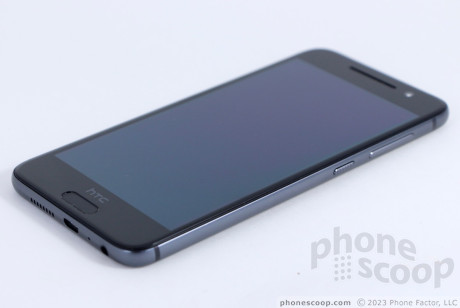
The One A9 from HTC is a high-class Android smartphone. It is among the first to ship with Android 6.0 Marshmallow, and boasts amenities such as a fingerprint reader and top-quality materials. The phone may strongly resemble another handset in the market, but the One A9 offers plenty to like in a well-made package. Here is Phone Scoop's full review.
Hardware
Is It Your Type?
If you're looking for a compact, well-made smartphone that happens to run Android, the HTC One A9 may be what you're seeking. It's among the first to run Android 6.0 Marshmallow, and the A9 boasts unibody metal construction, attractive styling, and an appealing spec sheet. Here is Phone Scoop's in-depth review.
Body
The One A9 from HTC has stirred up plenty of debate since its announcement in October, and unfortunately the discourse cannot be ignored. The handset strongly resembles Apple's iPhone 6s, so much so that many across the internet are pointing fingers and screaming "Copycat!" Anyone with eyes can tell that the One A9 and iPhone 6s do indeed look very much alike. For the purposes of this review, I'm going to try not to belabor the point too much.
Taken as a whole, the One A9 may be the finest device HTC has ever made. The design is plain almost to the point of being understated, but this is a strength in my eyes. The appeal of simplicity in design can't be denied, which is why Apple's iPhones have been so successful for so many years. Apple takes a minimalist approach to design with all its hardware, and HTC's industrial design team does the same. Looking back at HTC handsets such as the Nexus One, One X, One M7/8/9, there's a clear evolution of its simple approach to hardware. Simplicity has often been a core aspect of HTC's aesthetic appeal, and nowhere is that more evident than in the One A9.
Looking at its direct predecessors, it's clearly evident that the A9 descends from the M7, M8, and M9. The A9 represents the next evolutionary step in the design HTC has been crafting the last several years. Unfortunately, the end product here coincides almost exactly with that of Apple's — and Apple's reached stores a full year before HTC's. This is a hard set of circumstances to rectify (especially considering the 12-month cycle it takes to design, engineer, test, and manufacture most handsets.) That said, let's try to let the One A9 stand on its own two feet.
HTC has mostly resisted the urge to go crazy with big-screened phones. It kept the M8 (2014) and M9 (2015) contained to reasonable footprints thanks to five-inch screens. The same is true of the A9, though it treads dangerously close to the middle of a two-way street. Those who like smaller phones may find the A9 a smidge too big, while those who prefer large phones may find the A9 a bit too small.
The A9 has a rounded shape and smooth surfaces. It is much more comfortable to hold and use than the M9 or the Galaxy S6, which have sharp edges. The A9 is a great companion to have, as it slips into pockets easily and is a breeze to carry around and use. I had no trouble manipulating the phone with one hand. The materials and build quality are top-notch. You simply can't ask for a better combination of glass and metal. The brushed surfaces are attractive and feel great.
The front face is one aspect about the A9 that is clearly different from the M9 and older HTC handsets. Gone are the front-facing stereo BoomSound speakers. In their place you'll see a slit in the glass above the display for the standard earpiece speaker and a elliptical fingerprint sensor below the screen. I love the way the glass is curved gently where it meets the metal frame. These seams are smooth and tight. The downside of this design is that the A9 lacks any protection when placed face down on a flat surface. The fingerprint sensor is indented a bit, which helps make it easy to find by feel. It doubles as a "home" button, even though there's also a software home button on the screen.
On the left side, you'll find two trays: one for the SIM card and one for a memory card. They both require tools to eject, but are otherwise simple to interact with. The screen lock button and volume toggle are both on the right side of the phone. The lock button has a coarsely-ribbed edge that makes it feel completely different than the volume toggle. Both buttons have excellent travel and feedback. The volume toggle may be harder to reach for some thanks to its high placement on the edge.
The bottom edge is a busy place, where you'll find the headphone jack, micro-USB port, and the speakerphone. (The resemblance to the same edge on the iPhone 6s is rather uncanny.) The camera module — while placed dead-center near the top — otherwise mimics the appearance of the iPhone's. The metal rear panel is sealed up tight, which means the battery is as well.
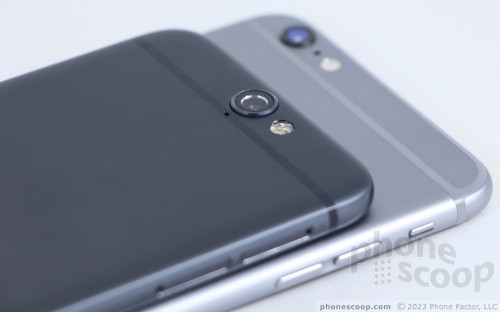
You may notice a thin strip of plastic forming most of the top edge. This covers the GPS antenna and is the only aspect of the phone that I think could fit a bit tighter.
Anyone searching for a mid-sized Android handset will be pleased with the One A9's high-end look and feel.
Screen
HTC isn't breaking any new ground with the One A9's 5-inch, full-HD display. The company's three most-recent flagships have all had the same size/resolution panel up front. It's a fine screen, of that there's no doubt. Of note, HTC switched the display tech from LCD to OLED. (It has historically relied on LCDs.) The resolution/size combo works well and everything on the screen looks sharp. It's bright enough that I was able to use the screen indoors and out. Viewing angles are pretty good, and colors are accurate.
Signal
We tested an AT&T version of the A9 in and around New York City. The phone performed well enough, in general, but I saw it dip down to HSPA+ more often than other AT&T phones I've tested recently. This didn't appear to impact speeds, however, as the A9 was plenty quick to download apps, update Instagram, and pull down email no matter the network connection. As far as voice calls are concerned, the A9 connected each and every call on the first dial, no matter how strong or weak the network coverage. It didn't lose any calls, nor drop any calls. Bottom line: the A9 did a fine job network-wise.
Sound
I was generally pleased with the A9's voice quality. Calls come through the earpiece loud enough that you can hold a conversation in a crowded coffee shop or diner (even if you probably shouldn't). Voices were nice and clear, which is the way I like them to be. You will need to keep the volume set at 75% or higher, but there's no distortion when the phone is cranked all the way up. The speakerphone also offers good volume and clarity. I was able to maintain conversations in a car moving at highway speeds without issue. Those I spoke to through the A9 said I sounded great.
Ringers and alerts managed to get my attention most of the time, but not always. The vibrate alert could be a bit stronger.
I'm seriously bummed the A9 doesn't have stereo BoomSound speakers. Extra-loud speakers were a welcome addition to HTC's other recent handsets and I found I sorely miss them when using the A9.
Battery
Color me surprised. When I first saw that the A9 includes a 2,150 mAh battery, I panicked a bit. How could HTC select such a small battery for a device like this? Most smartphones in the same class are packing batteries in the 2,400 - 2,800 mAh range. "Surely the A9 will be dead before lunch," I thought. I thought wrong.
Thanks to the Android 6.0 Marshmallow operating system, smaller screen, and efficient Snapdragon 617 processor, the One A9 delivers a full day of battery life without issue. The A9 consistently held a charge from breakfast to bedtime with some power to spare at the end of the day. Using the camera was the only activity that took an obvious toll on the battery.
The A9 offers several battery-saving tools, including Power Saver and Extreme Power Saver modes. These are carried over from previous HTC handsets. Power Saver dims the screen, turns the screen off more frequently, and limits background processes to cut down on power usage. Extreme Power Saver turns the A9 into a feature phone, for all intents and purposes, and delivers hours and hours of additional uptime, as long as you don't mind being limited to a greyscale screen with basic calling and messaging functions.
Last, the A9 supports Qualcomm QuickCharge 2.0, and will gain QuickCharge 3.0 in a future software update. The phone charges quickly, and often reached 100% capacity in about 75 minutes (with QuickCharge 2.0). The only bummer here is the A9 doesn't actually ship with a QuickCharge 2.0 charger. Instead, the included charger is a 1.5a job that charges a bit faster than a 1.0a charger would.
Bluetooth, GPS, NFC, WiFi
The A9's various radios performed as expected. The Bluetooth radio was adept at pairing with headphones, hands-free systems, speakers, and accessories such as smartwatches. Calls made via Bluetooth headsets were surprisingly good, but I wasn't as impressed when I made calls through my car. (Those typically use different Bluetooth profiles; something may be off with HFP mode on the A9.) Music sounded really good via Bluetooth headphones. The WiFi worked well.
The NFC radio was helpful in easing the pairing process, and it also supports Android Pay.
GPS worked well with Google Maps and was quick to locate me. I used the A9 to navigate the Upper West Side on foot during the Thanksgiving holiday and was impressed with its accuracy and speed.
Software
Lock Screen
The One A9 may be among the first handsets to run Android Marshmallow 6.0, but the phone uses the same Sense lock screen that's found on older HTC smartphones. The one major difference is, of course, the fingerprint reader.
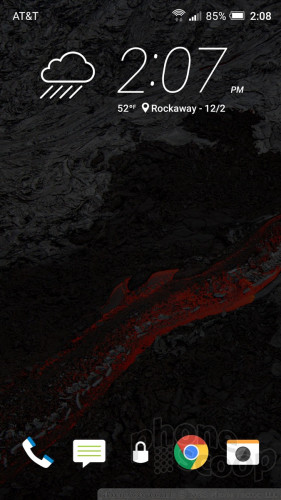
Users can select from several different lock screen behaviors. Most show the clock, notifications, and shortcuts when the screen lock button is pressed.
The A9's fingerprint sensor works in coordination with the PIN, pattern, or alpha-numeric password. Basically, you set one of those three to lock the phone, but your thumbprint can serve as an alternate way to unlock the A9. I was able to train four fingerprints and found the A9 to be reasonably good at recognizing prints quickly on the first attempt. The Nexus 6P, iPhone 6s, and Galaxy S6/Note 5 are all a bit faster, the but A9's fingerprint reader is fast enough that I found it more convenient than a regular password.
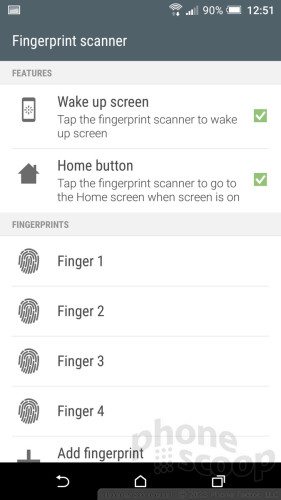
Home Screens
The One A9 runs Android 6.0 (Marshmallow) with the latest version of HTC Sense software on top. HTC dialed Sense back a bit this time around. For example, HTC ditched its notification shade for the stock Quick Settings panel. It's also using more of the stock Android apps (Gmail, music) rather than its own. Sense has its own fonts, icons, graphics, and settings tools. It offers a rich set of personalization features, but it isn't for everyone.
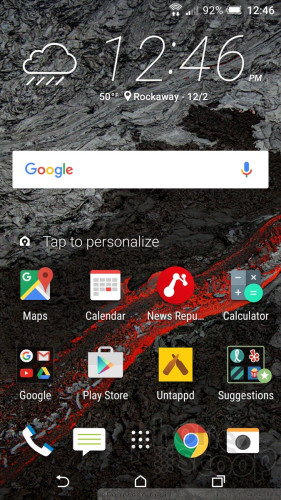
The home screen panels and notification shade work pretty much the same as they do on all Android handsets. HTC's app menu offers a lot more flexibility than the stock Android version, as it allows users to arrange apps alphabetically, in a custom configuration, or via most-recently-used. It also lets people change the size of the grid, as well as hide and otherwise manage apps by stuffing them into folders.
The One A9 includes HTC's included BlinkFeed social news reader app, which is, by default, the left-most homescreen panel. BlinkFeed is sort of like Flipboard and lets you package inbound news stories into a single, socially-connected reader. You can disable it if you want.
Customizing the home screen appearance is a key trait of Sense, and that's no different on the One A9. Users can change the bottom navigation buttons, select from a handful of pre-installed themes, and then tweak each theme with various accent colors, wallpapers, keyboards, fonts/sizes, and on and on.
(To be frank, I ditched Sense for the Google Now launcher, which is the same one used by Google's Nexus-branded phones. I'd rather have Google Now as the left-most screen than BlinkFeed.)
Whichever home screen configuration you choose, the A9 supports Google Now On Tap. With Now On Tap, a long press of the home button delivers contextually-relevant details about whatever is on the screen. As I said in my review of Android 6.0 Marshmallow, Now On Tap is best used when emails or text message threads include references to restaurants, bars, clubs, movies, and the like.
I was worried about the processor headed into this review, but, like the battery, my worries were unfounded. The A9 packs a 1.5 GHz Qualcomm Snapdragon 617. While it's not an 800-class processor, it's still a solid chip that, when paired with 3GB of RAM, delivered the goods. The A9 never felt slow or underpowered, and was always quick to open apps and complete tasks.
Camera
The One A9's camera app is more a less an exact replica of the One M9's camera app. You can open the app from the lock screen, but there is no dedicated camera button.
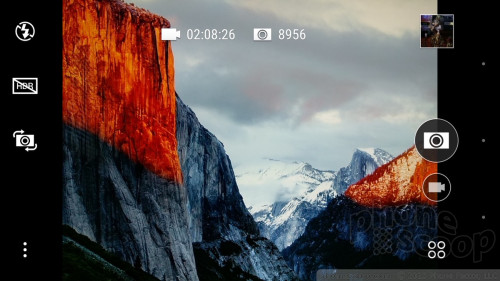
The basic viewfinder includes separate shutter buttons for the camera and video camera, a button to switch between the different shooting modes, and access to the gallery. The camera also has toggles for the flash and HDR, and a simple settings tool.
The A9 ships with six main shooting modes: normal, selfie, panorama, pro, hyperlapse, and slow motion. These are all self-explanatory and behave as expected. In addition to the dedicated camera mode switcher, you can jump between the modes quickly by swiping your finger up or down on the screen, similar to the One M9. You cannot download and install other shooting modes, however, nor can you create your own custom modes. That's a bit of a bummer.
Most people will be pleased if they stick to the normal shooting mode, but the pro mode makes a wide set of tools available for creative image capturing. For example, the normal mode does not let users adjust white balance, ISO, shutter speed, or focus, but the pro mode does. Pro mode lets you take exposures up to 2 seconds, which can make for some fun night-time shots. Moreover, the pro mode captures images in RAW format, which allows for more advanced editing after the fact.
Scenes — such as macro, landscape, and night shot — are gone entirely, but the selfie mode includes HTC's software-controlled beautification tool. The Zoe capture tool, which snags a video snippet and several images at the same time, is available but only when using the camera cropped down to 10 megapixels (16:9). It's not easy to find, but the results are the same as ever.
The camera app offers a nice balance of features and is quick to open and shoot photos.
Photos/Video
The One A9's main sensor captures 13 megapixels in the 4:3 aspect ratio or 10 megapixels in the 12:9 aspect ratio. Either way, the images were surprisingly good. In fact, I think they look better than similar shots captured with the One M9. The pictures were generally sharp, and nearly always had accurate exposure and white balance. Low-light shots were a touch on the grainy side, but not overly so. I am pleased enough with the photos that I'd say you use the A9 for everyday photo needs and more important events.
The selfie cam can snag 4-megapixel images. I'd call the results decent, and much improved over what I saw from the One M9. Most importantly, low-light images weren't a complete disaster; instead, they had only a small amount of grain and were often in focus and accurately exposed.
The A9 records video at a max. resolution of 1080p HD. (No 4K for you.) The 1080p video I captured looked fine. Focus, exposure, and color were spot-on the majority of the time. You can use the One A9 for your everyday video needs and beyond.
AT&T/HTC Stuff
The usual amount of bloatware from AT&T is preinstalled, but the One A9 lets you delete or hide most of it. Thank goodness.
HTC's most interesting app is the Zoe app for piecing together photos/videos into shareable montages. It's a fun tool that works well. The fx photo editor is another powerful app for fine-tuning your pictures. It works especially well with images captured in RAW mode.
Wrap-Up
The One A9 falls into an emerging category in today's mix of smartphones. It wants to be a flagship smartphone, but it doesn't quite have the specs to earn that moniker. Instead, it exists as an affordable flagship: a phone that features premium design and build quality with components that are high-end, but not quite cutting-edge.
In this class — which includes phones like the Nexus 6P and Moto X Pure Edition — the One A9 competes well. All three of these phones cost $499, a bit less than the $650 commanded by flagships. I find the One A9 to be a great phone for everyday use and found I've been favoring it over the last couple of weeks. The design (though awfully familiar) is classy and the quality is superb.
The phone's software is light on its feet. Marshmallow runs well on the phone and HTC's customizations give owners lots of room to make the phone their own. Call quality, data speeds, and battery life are at competitive levels.
If you're worried about the camera because of HTC's shaky track record in that area, don't be. The A9 has a decent camera on board. While it won't match the iPhone 6s or Galaxy Note 5, you'll probably be happy enough with the results.
HTC did a good job with the One A9, and I'd recommend it to anyone seeking a mid-sized handset.
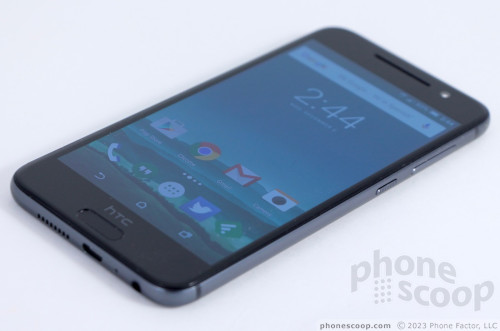
Comments
Smart pairing
No 800 class but the latest in 600 class and the memory to handle.
Great way to keep the performance.


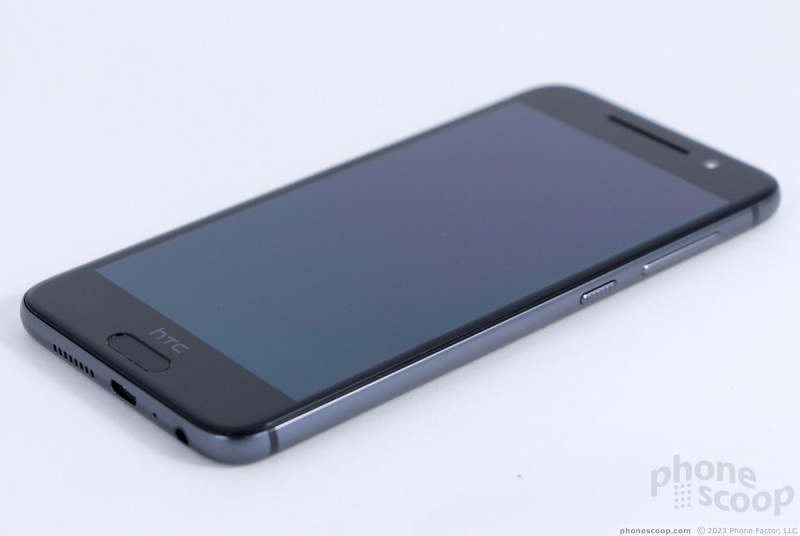














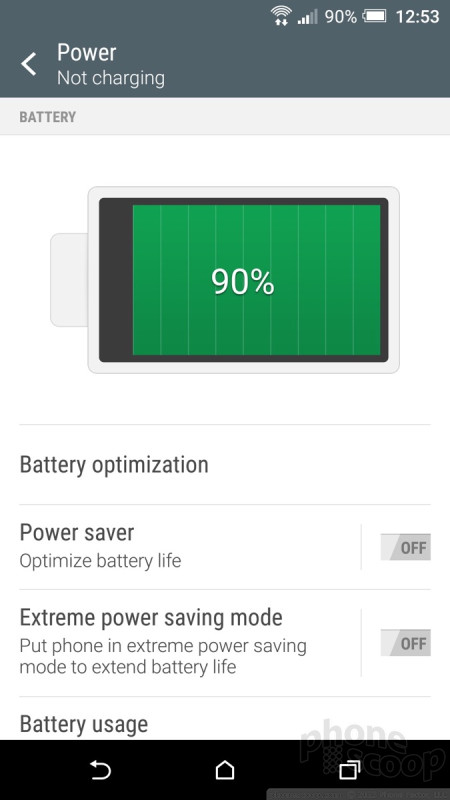



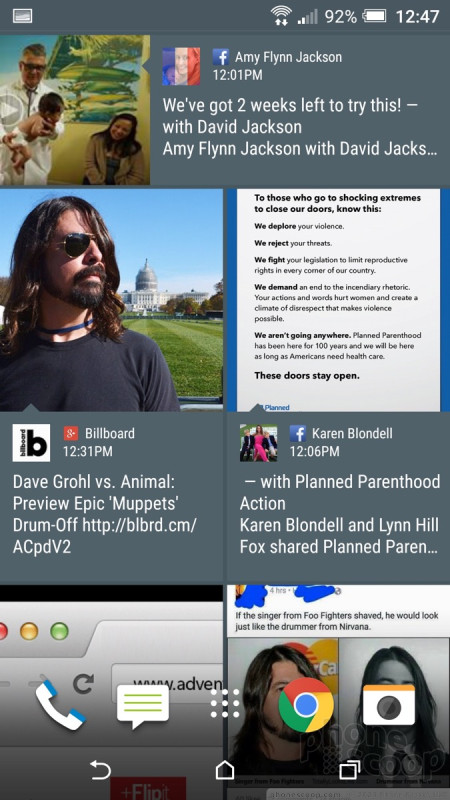








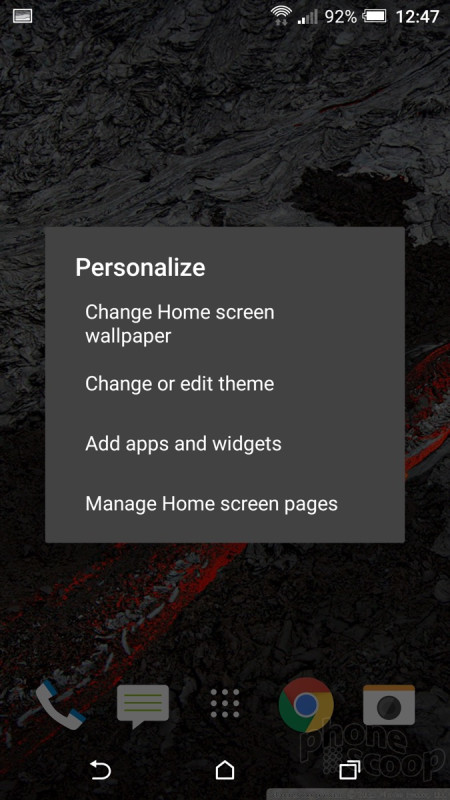





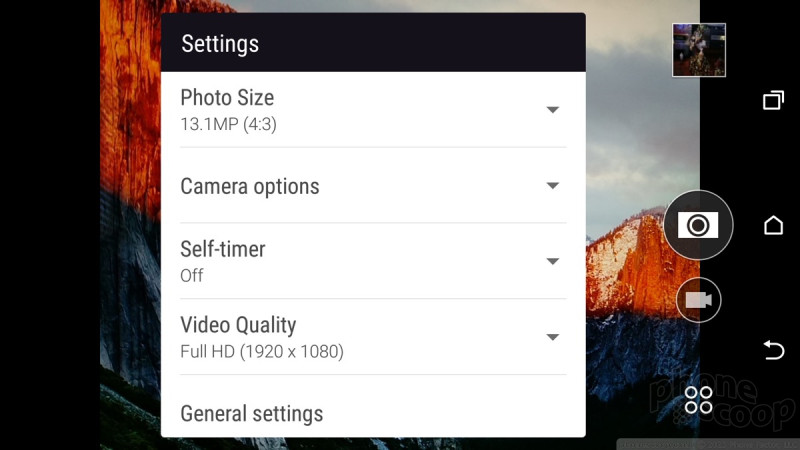
















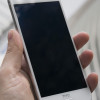 Hands On with the HTC One A9
Hands On with the HTC One A9
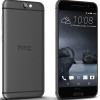 HTC's One A9 Boasts Fingerprint Reader and Runs Marshmallow
HTC's One A9 Boasts Fingerprint Reader and Runs Marshmallow
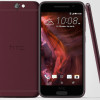 HTC One A9: First Phone To Work on Verizon Without CDMA
HTC One A9: First Phone To Work on Verizon Without CDMA
 HTC One A9
HTC One A9










